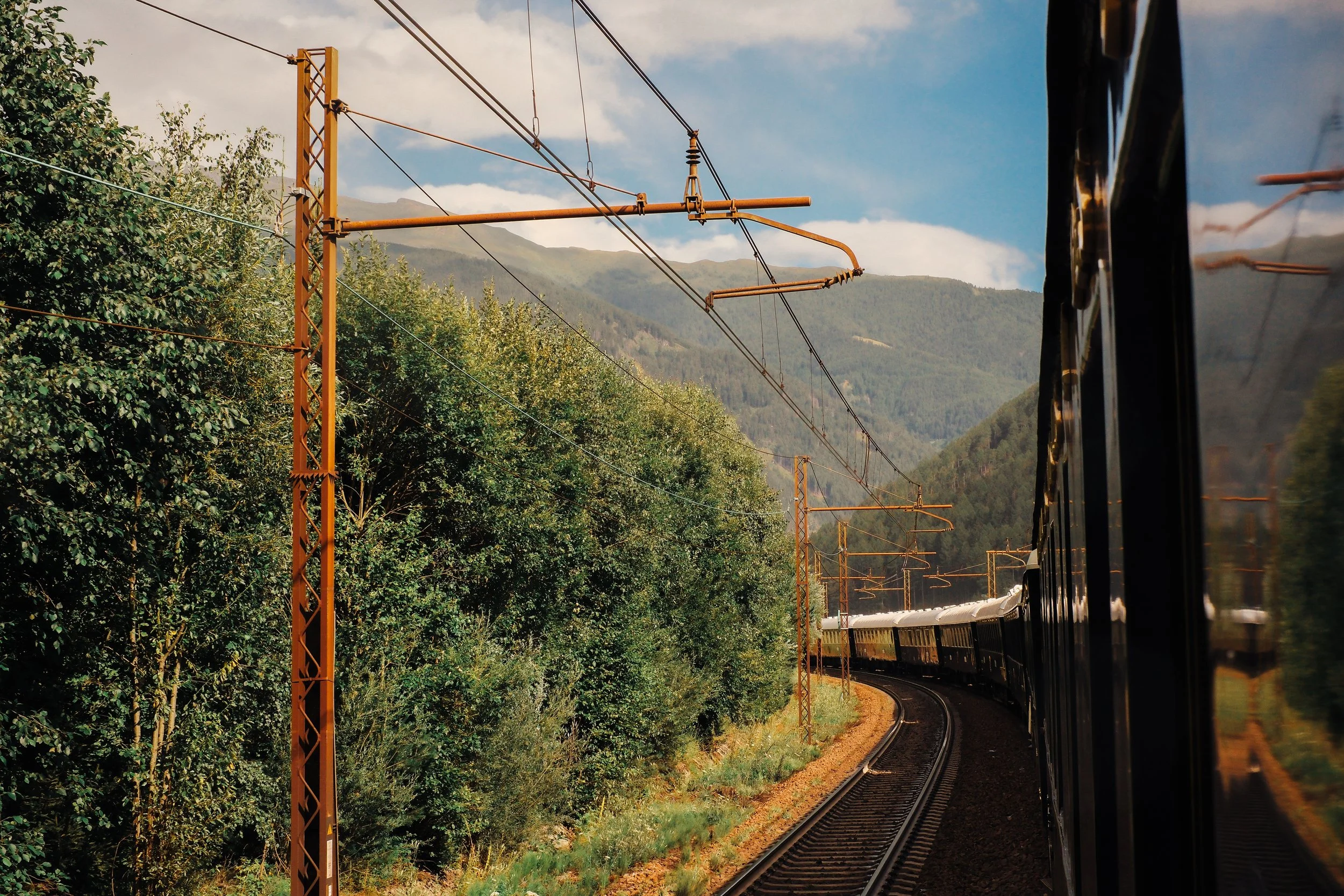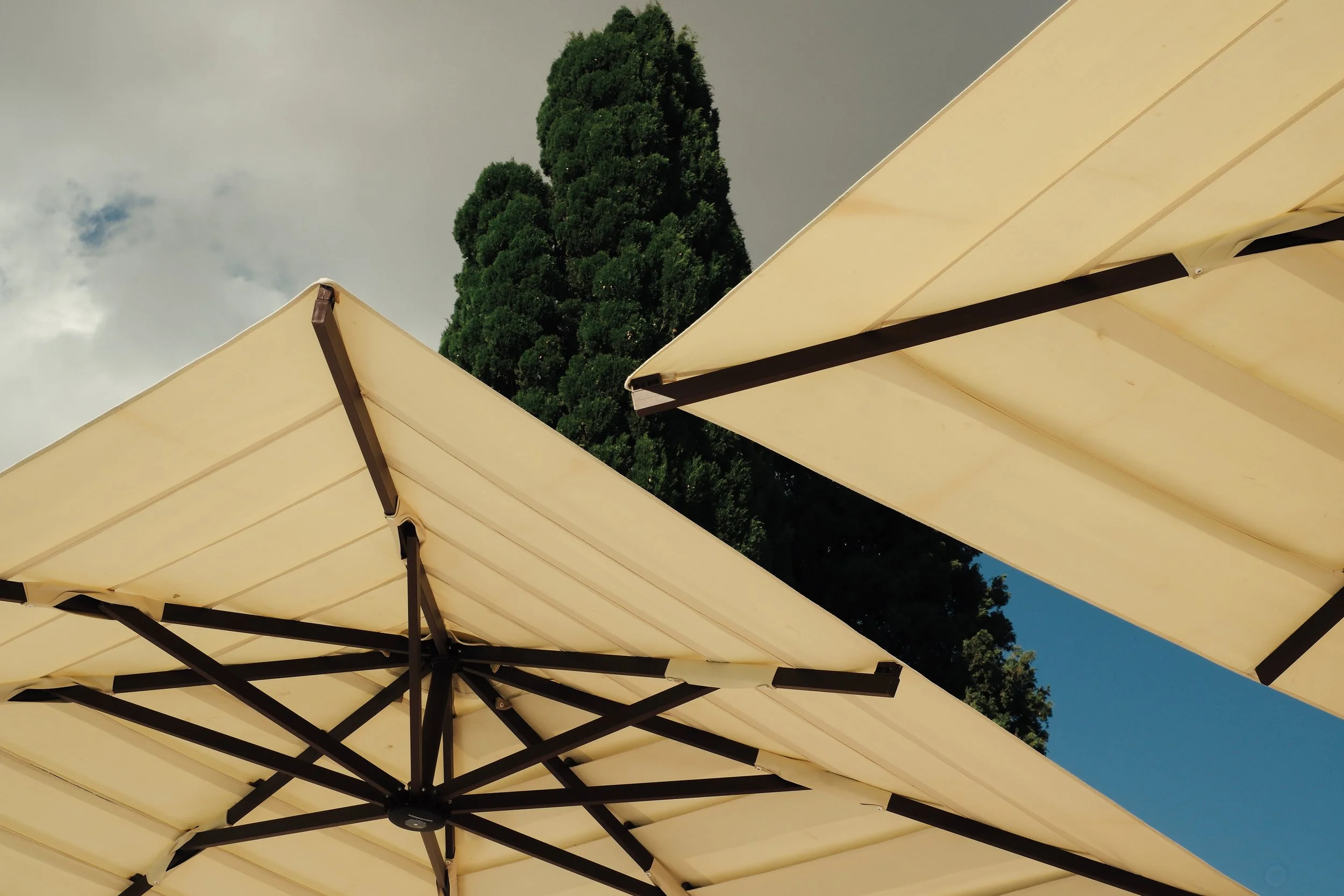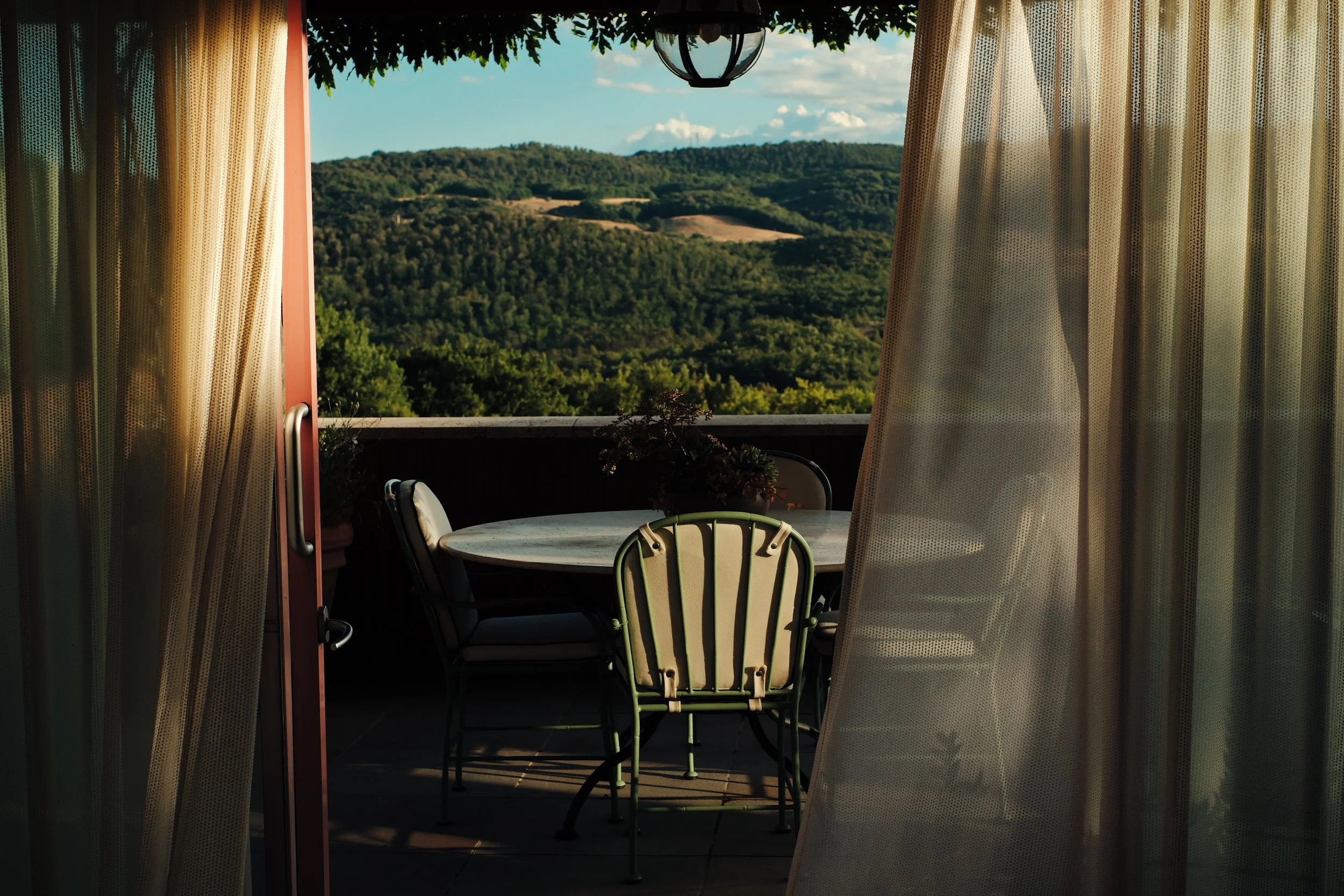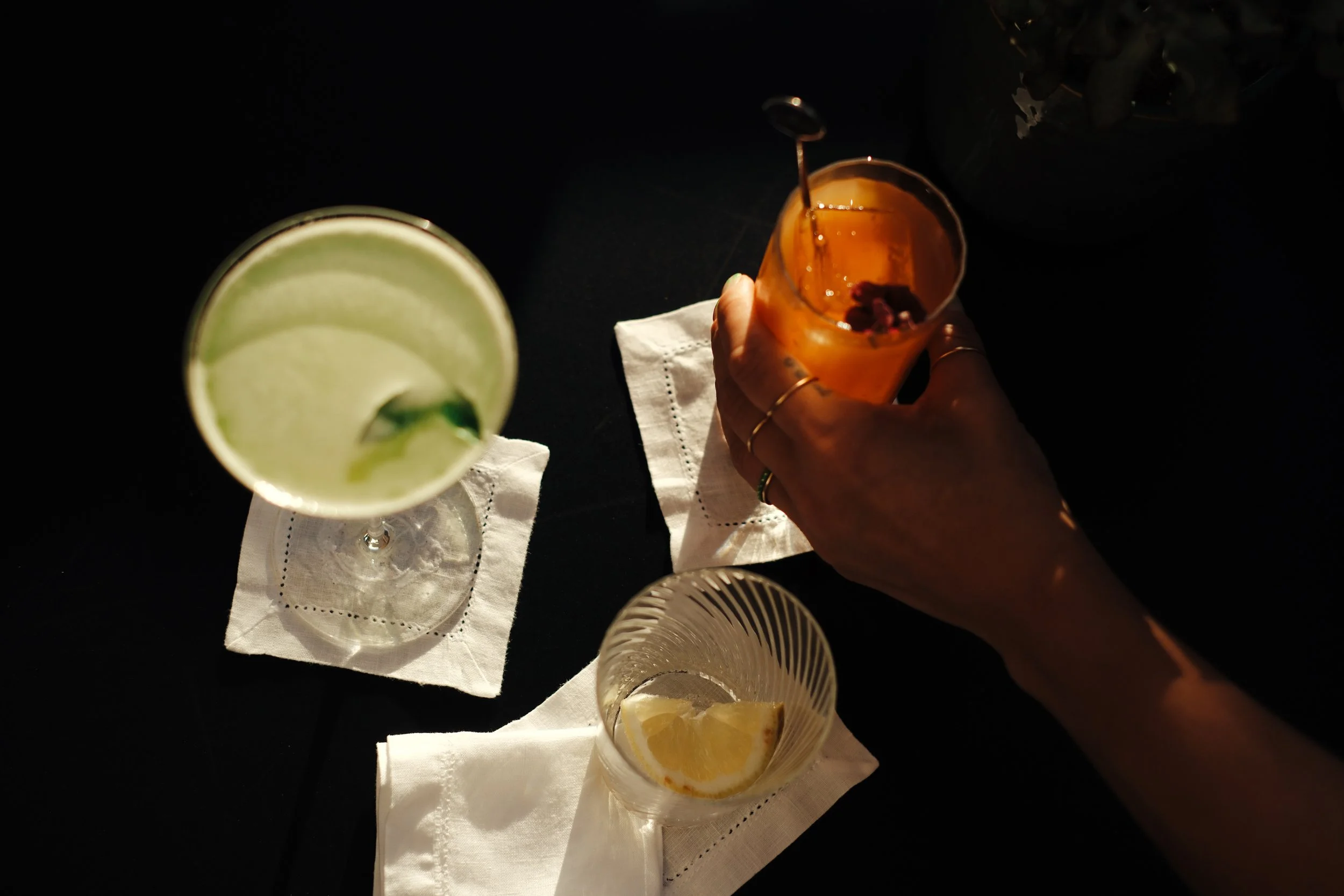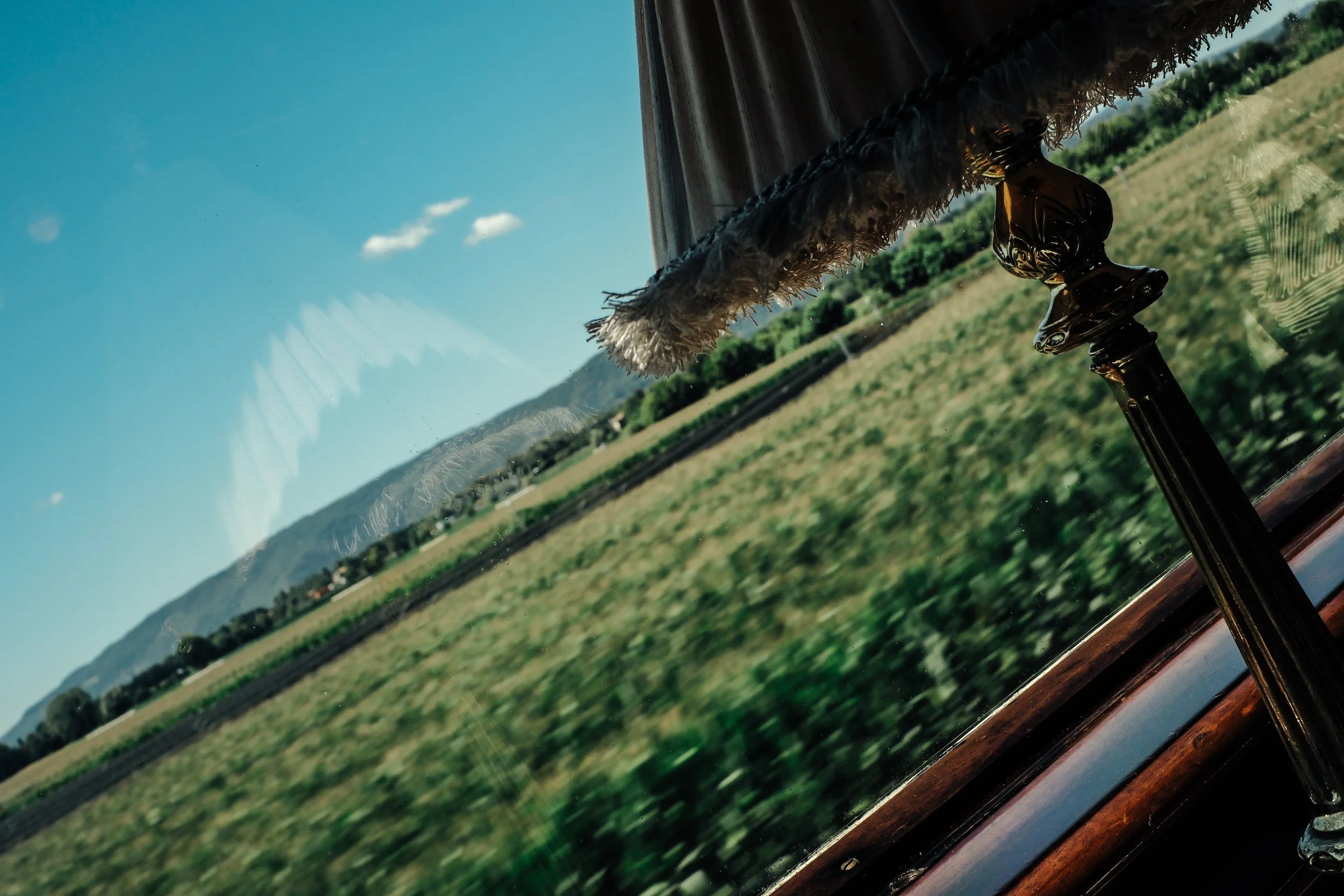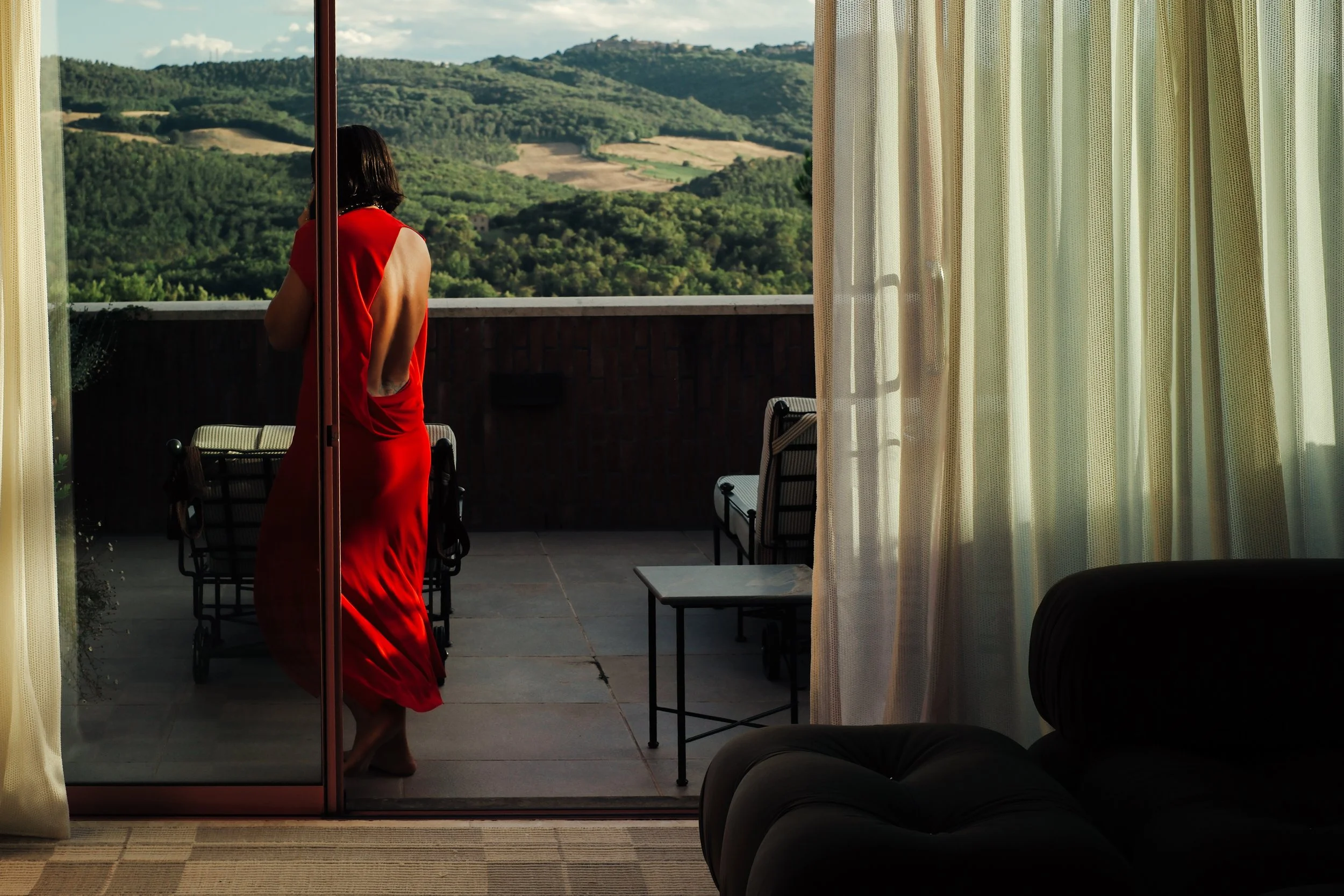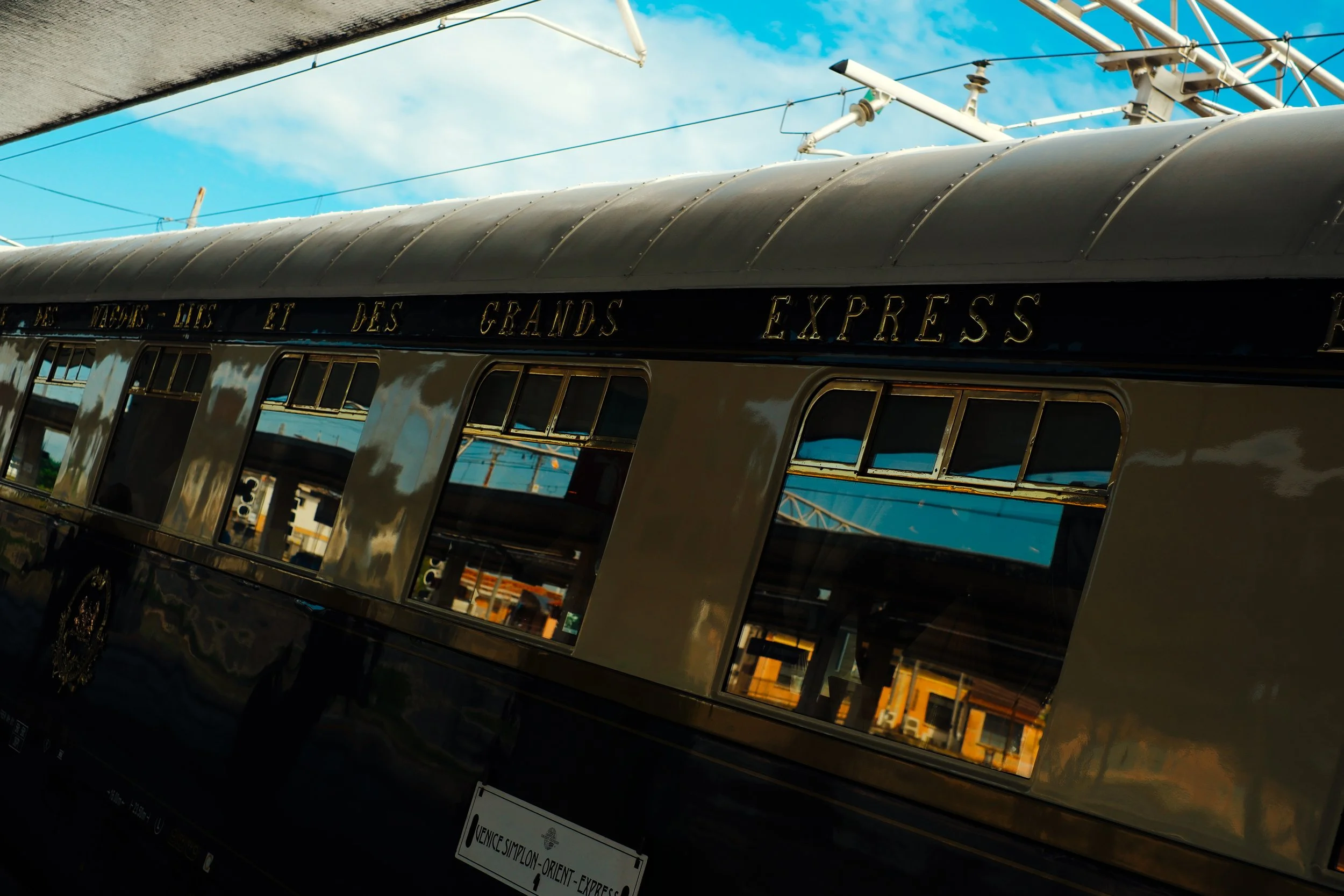EXCLUSIVE PRINT EDITORIAL ‘BELMOND’ BY JOY SINANIAN
words FRANCK ALAN-STEED
“When you find yourself in a truly exceptional place, you should make the most of it until the very end. Since you live in Paris, why not come back by train?” And in the process, you will discover what EDMOND ABOUT meant when he wrote in De Pontoise à Stamboul that the VENICE SIMPLON-ORIENT-EXPRESS “is truly the waking dream of a man.”
As we lie back on sun loungers and feel the cool breeze from a splendid marbled pool wash over us, the young Italian woman beside me confides that she comes every year to the splendid CASTELLO DI CASOLE, A BELMOND HOTEL, TUSCANY, which has been exquisitely transformed into a five-star sanctuary. Hidden deep in the countryside, less than an hour from Siena, this rare haven opens onto the most enchanting hills of Tuscany.
Of course, every detail has been thoughtfully considered to ensure guests are offered the deepest tranquillity and a unique stay. Perhaps drawing on the spirit of GIO PONTI, the designers have shown remarkable ingenuity in preserving the estate’s historic soul while infusing it with the utmost luxury. The spacious rooms are bathed in light and adorned with opulent materials and warm hues. The bathrooms, which have a contemporary feel, are no less striking, with mosaic panels in geometric patterns adorning their walls. The art of relaxation continues in the Essere spa nestled in the castle’s vaulted former cellars, where guests are invited to restore both body and mind in perfect serenity.
Given the BELMOND group’s meticulous care, it was only natural that its approach to cuisine would be uncompromising. And so it is; with a chef — Executive Chef DANIELE SERA — devoted to superb regional produce and the careful selection of each ingredient, the experience is outstanding. On the Emporio terrace, which boasts sweeping panoramic views, I am introduced to subtly reimagined Italian and Tuscan classics prepared with dedication and simplicity: astonishingly light wood-fired pizza, freshly grilled fish, and ricotta. All of it, including Ulpaia wine, honey, olive oil and an enchanting Venvia gin, is sourced from local producers.
Leafing through STENDHAL’s travel journals, I wonder if crossing the Italian countryside might have intensified his love for this exceptional land, and I decide to extend my own journey by boarding the most storied train of all. Fortunately, there is one cabin remaining on the Venice to Paris train that evening. While making my reservation, I discover an unusually rich array of choices for a night trip. The Venice Simplon-Orient-Express is a journey that must be planned weeks in advance, as every detail can be tailored to one’s desires.
Venice’s Santa Lucia station discretely shelters the great locomotive and its stately carriages. From the moment I step onto the running board, reality slips away, and my imagination takes over. Who might I encounter in these corridors from another age? Statesmen arriving to sign discreet international treaties? Businessmen crossing borders in the utmost comfort? Or perhaps great poets, adrift and searching for inspiration?
A hostess guides me through the narrow passageways. In my suite, beside a bottle of Veuve Clicquot reclining nonchalantly in an ice bucket, is a setting of pure splendour: wood panelling and marquetry recreated in specialist workshops, and mahogany and Macassar ebony tabletops. The gleaming light fixtures are faithful to their original models, as are the fabrics, rich with period motifs. I brush the bed linens with my fingertips, though a glance alone tells me they are silk. Everything pays homage to RENÉ PROU, one of the great Art Deco designers, who in his time boldly adorned extraordinary compact spaces.
I have barely finished my snack — a devilled egg crowned with pearls of caviar and smoked salmon — when it is already time for lunch. A dilemma: the Orient-Express boasts three dining cars. I choose the one JULES VERNE might have favoured: L’Étoile du Nord. Here, I find the same Art Deco atmosphere and Belmond’s unwavering refinement, conjuring moments from another era: vintage menus, BERNARDAUD porcelain with glimmering gold accents, a hand-embroidered tablecloth … The cuisine is equally impressive, and somewhere between the marinated amberjack and the grilled John Dory served with tomato risotto, I wonder how the chef, JEAN IMBERT, manages to rival the finest Michelin-starred restaurants in Paris.
When the meal ends, passengers are invited to the lounge to enjoy afternoon tea and piano music. Time races forward in a way that defies reason, though there is nothing to do but gaze at the magnificent landscapes through which the Venice Simplon-Orient-Express glides without pause. Soon, champagne is served as a sparkling prelude to dinner. This time, I opt for L’Oriental, never imagining that the meal would be preceded by an evening in the Bar Car ‘3674,’ where I find some of my fellow travellers dancing to DUKE ELLINGTON’s tunes.
The soft glow of exquisite chandeliers fills the early hours of night, delicately illuminating the details of the ornamentation that elegantly shape the train’s interiors. Paris approaches as the day breaks. I take a quick shower so as not to miss brunch, pausing only to admire a smoked mirror amid genuine brass fixtures. I spend the last hour of the journey over breakfast, barely daring to touch the butter on which the chef has artfully etched the delicate “Venice Simplon-Orient-Express” logo.
As I step down onto the platform to bid farewell to the staff who have made this journey so extraordinary, I cannot help but agree with SIR KENNETH BRANAGH: the “King of Trains and the Train of Kings” is a magnificent invitation to a voyage without end.
TEAM CREDITS:
creative production JOY SINANIAN
photography ONDINE SIMON
words FRANCK ALAN-STEED
editor TIMOTEJ LETONJA

